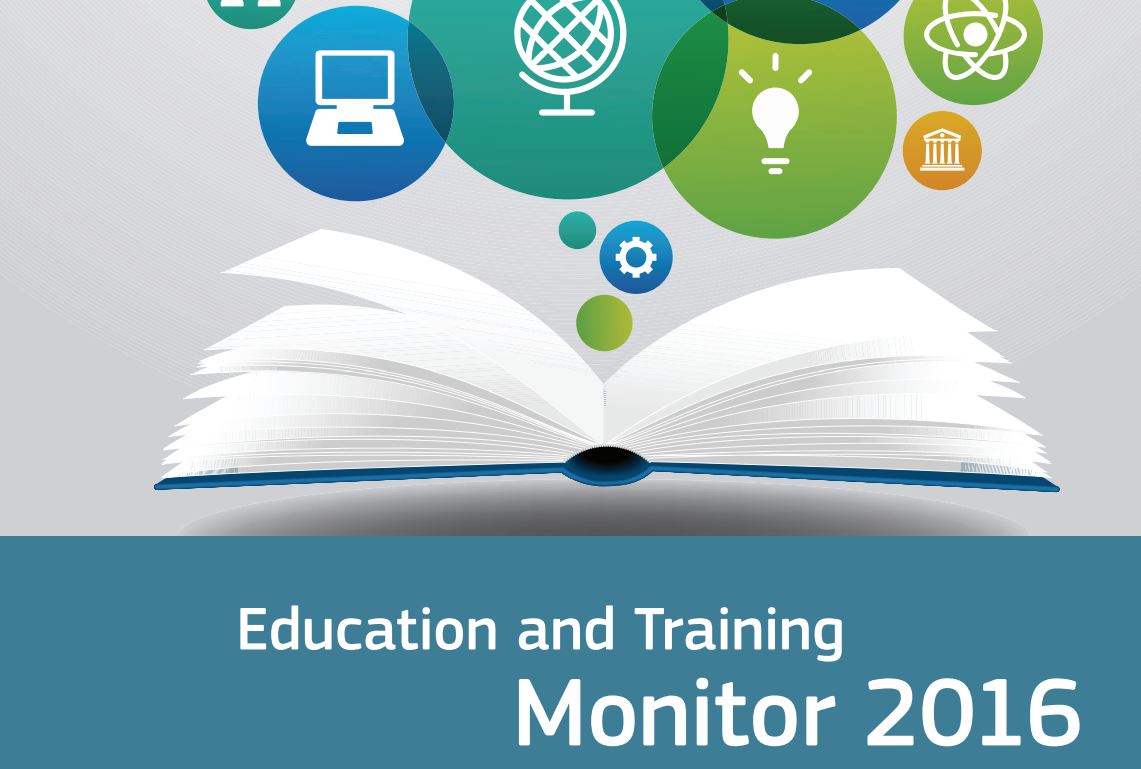Education and Training Monitor 2016: public investment and inclusion are top priorities for Europe
Published:
On 7 November 2016, the European Commission issued its annual publication on the development of education and training in the EU – Education and Training Monitor 2016. The report evaluates the EU and individual Member States’ performance in education and training against the Education and Training 2020 (ET2020) benchmarks, as well as presents and examines a number of educational policy initiatives in various Member States. This year’s edition of the report is mostly based on the data of 2014 and has a special focus on the issues of migration and refugee crisis. The report is composed of a global overview of the EU progress towards ET2020 targets, complemented by 28 individual country reports in each EU language.
The yearly Education and Training Monitor is being increasingly used not only in political discussions, but also as one of the main sources underpinning the Commission’s analysis of education challenges and policy developments in the European Semester. It puts the spotlight on education priorities most in need of investment and identifies reform policies for 2017 that are likely to feed in the Country Specific Recommendations 2017 of the European Semester, policy recommendations and political discussions.
Last year the results identified the lack of adequate investment in education as one of the biggest issues at stake in the EU: most of Member States cut their expenditures on public sectors as part of austerity measures. According to the new report, in 2014, for the first time in three years, public investment in education at the EU average grew by 1.1%. Compared to the previous year, public education investment increased by more than 5% in Bulgaria, Hungary, Latvia, Malta, Romania, and Slovakia. However, the report fails to recognise that despite this positive increase, in many Member States, the share of total public expenditures on education is still significantly lower than pre-crisis level. For example, in Romania, depicted as one of the virtuous countries, the current share of public investment in education (8.6%) is still lagging behind the level of 2010 (10.5%). While EU public funding on education increased over last year, a number of countries are still cutting their education budget, namely: Austria, Belgium, Croatia, Cyprus, Estonia, Finland, Greece, Italy, Lithuania, and Slovenia. As ETUCE highlighted in its report on The state of funding in education, teachers’ working conditions, social dialogue and trade union rights in Western European and Central and Eastern European countries, deterioration of education systems and teachers working conditions is mostly to be witnessed in those countries which operated subsequent reductions in education funding throughout the years, rather than one-off cuts, confirming education as an easy target for fiscal consolidation within the rules of the Stability and Growth Pact.
Analysing the EU progress towards the headline targets of ET2020, the report found out that:
- the EU is very close to achieving the ET2020 target of having below 10% share of early school leavers: between 2014 and 2015, an overall EU average drop-out rate reached 11%;
- completion rates in tertiary education increased significantly across the EU in 2015: while the objective is to have 40% of tertiary graduates among the population of 30-34 year-olds by 2020, the EU average tertiary attainment rate is already 38.7%;
- there is a significant gap between young people with a migration background and native-born residents in terms of both targets: in 2015, people with migration background had higher early school leaving rates (19%) and lower rates of tertiary educational attainment (36.4%) than the native population (10.1% and 39.4% respectively).
According to the report, several Member States took a number of measures to address these inequalities in education: for example, Germany is planning to recruit more than 40 000 teachers and thousands of social workers and to create around 300 000 new places in its education system, Finland increased financial support to municipalities to organize preparatory classes, and Belgium has increased the capacity of reception classes and the number of language teachers.
The report highlights the importance of teachers’ role in providing inclusive education, preventing early school leaving and tackling the underachievement (especially, in Math, where the underachievement rate is 22.1% while the ET2020 target is 15%). The rise in the number of refugees and migrants coming to the EU, 30% of whom are under 18 years old, requires not only the recruitment of more teachers and social workers, but also the provision of quality continued professional development and initial training for teachers to be able to teach in an increasingly diverse environment. For example, according to the report, there is a growing demand among teachers in the EU to be allowed to teach the language of the educational institution as a ‘first foreign language’ while using it as the language of instruction for other subjects.
ETUCE also outlines public investment and inclusion as the main priorities of the current education systems in the EU and calls for increased emphasis on the status of teaching profession and teachers’ continuous professional development. Martin Rømer, ETUCE European Director, commented on the Education and Training Monitor 2016: ‘Education must be funded both sufficiently and effectively: Member States need to increase public investment to boost equitable and high-quality education for all. A more positive narrative of high-quality public education is the basis for providing the opportunity to all children and young people to learn, regardless of their migrant origins or their socio-economic background. At the same time, with growing societal challenges and demands, initial teacher training and continuous professional development should receive greater emphasis and resources’.